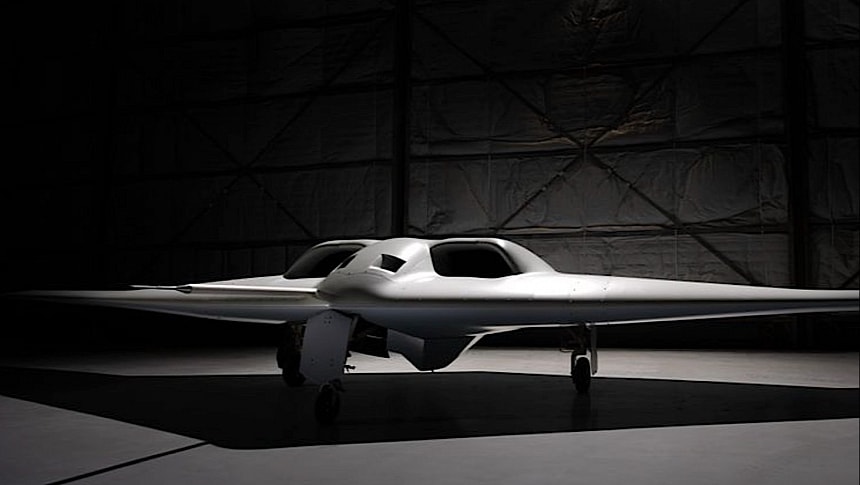DARPA is an unending source of high-tech, secret projects, and it seems to have focused quite a lot in recent years on those that have to do with aviation. The latest such effort we got wind of: the XRQ-73 SHEPARD.
SHEPARD is, of course, an acronym, and it stands for Series Hybrid Electric Propulsion AiRcraft Demonstration. It's a program meant to deliver in the hands of the U.S. military an uncrewed aircraft capable of flying through the sky as quietly as possible, and it builds on another initiative, one called Great Horned Owl (GHO) and overseen by the Air Force Research Laboratory (AFRL).
GHO started out in a bid to develop an intelligence, surveillance, and reconnaissance (ISR) drone capable of sneaking close to enemy lines without said enemy being able to detect it. In a nutshell that would mean a solution that has a very low acoustic signature, but is not battery-powered, because those drones have serious limitations when it comes to range and payload.
So the AFRL turned its sights on alternative means of propulsion, including one that is based on a hybrid electric setup. We don't know the exact details of what is being done as part of the GHO program, but the military is not shy to say the powerplant will "generate electrical power from liquid hydrocarbon fuel (specifically gasoline or diesel)" to use it for pure electric flight.
The AFRL is already hard at work making the concept a reality, and it is doing that with the help of an experimental aircraft called XRQ-72.
Tapping into the findings of the GHO contract, DARPA tasked Northrop Grumman with coming up with a solution, and the defense contractor delivered: it announced this week the design and construction of the SHEPARD, which was recently given the official secret test aircraft designation XRQ-73.
Not much is known about the drone other than it was made with help from Scaled Composites, the company behind the mighty SpaceShipOne. It likely uses a combustion engine directly tied to an alternator or generator, as well as an electric motor-driven means of propulsion.
Northrop Grumman did share a photo of the XRQ-73 (the main image of this piece), but given the secret nature of the project not much is revealed, apart from the fact it kind of looks like the upcoming B-21 Raider nuclear bomber (depicted in the gallery attached to this piece), also made by Northrop Grumman.
The XRQ-73 will also be larger than the XRQ-72 and should be able to carry "operationally representative fuel fraction and mission systems" while at the same time keeping under the Group 3 UAS weight limit – that's below 1,320 pounds (600 kg), as per the Department of Defense (DoD) classification.
Based on this research, DARPA plans to develop an aircraft design quickly. And by quickly, it means we should see the first one take flight within the next 20 months.
GHO started out in a bid to develop an intelligence, surveillance, and reconnaissance (ISR) drone capable of sneaking close to enemy lines without said enemy being able to detect it. In a nutshell that would mean a solution that has a very low acoustic signature, but is not battery-powered, because those drones have serious limitations when it comes to range and payload.
So the AFRL turned its sights on alternative means of propulsion, including one that is based on a hybrid electric setup. We don't know the exact details of what is being done as part of the GHO program, but the military is not shy to say the powerplant will "generate electrical power from liquid hydrocarbon fuel (specifically gasoline or diesel)" to use it for pure electric flight.
The AFRL is already hard at work making the concept a reality, and it is doing that with the help of an experimental aircraft called XRQ-72.
Tapping into the findings of the GHO contract, DARPA tasked Northrop Grumman with coming up with a solution, and the defense contractor delivered: it announced this week the design and construction of the SHEPARD, which was recently given the official secret test aircraft designation XRQ-73.
Not much is known about the drone other than it was made with help from Scaled Composites, the company behind the mighty SpaceShipOne. It likely uses a combustion engine directly tied to an alternator or generator, as well as an electric motor-driven means of propulsion.
Northrop Grumman did share a photo of the XRQ-73 (the main image of this piece), but given the secret nature of the project not much is revealed, apart from the fact it kind of looks like the upcoming B-21 Raider nuclear bomber (depicted in the gallery attached to this piece), also made by Northrop Grumman.
The XRQ-73 will also be larger than the XRQ-72 and should be able to carry "operationally representative fuel fraction and mission systems" while at the same time keeping under the Group 3 UAS weight limit – that's below 1,320 pounds (600 kg), as per the Department of Defense (DoD) classification.
Based on this research, DARPA plans to develop an aircraft design quickly. And by quickly, it means we should see the first one take flight within the next 20 months.
















